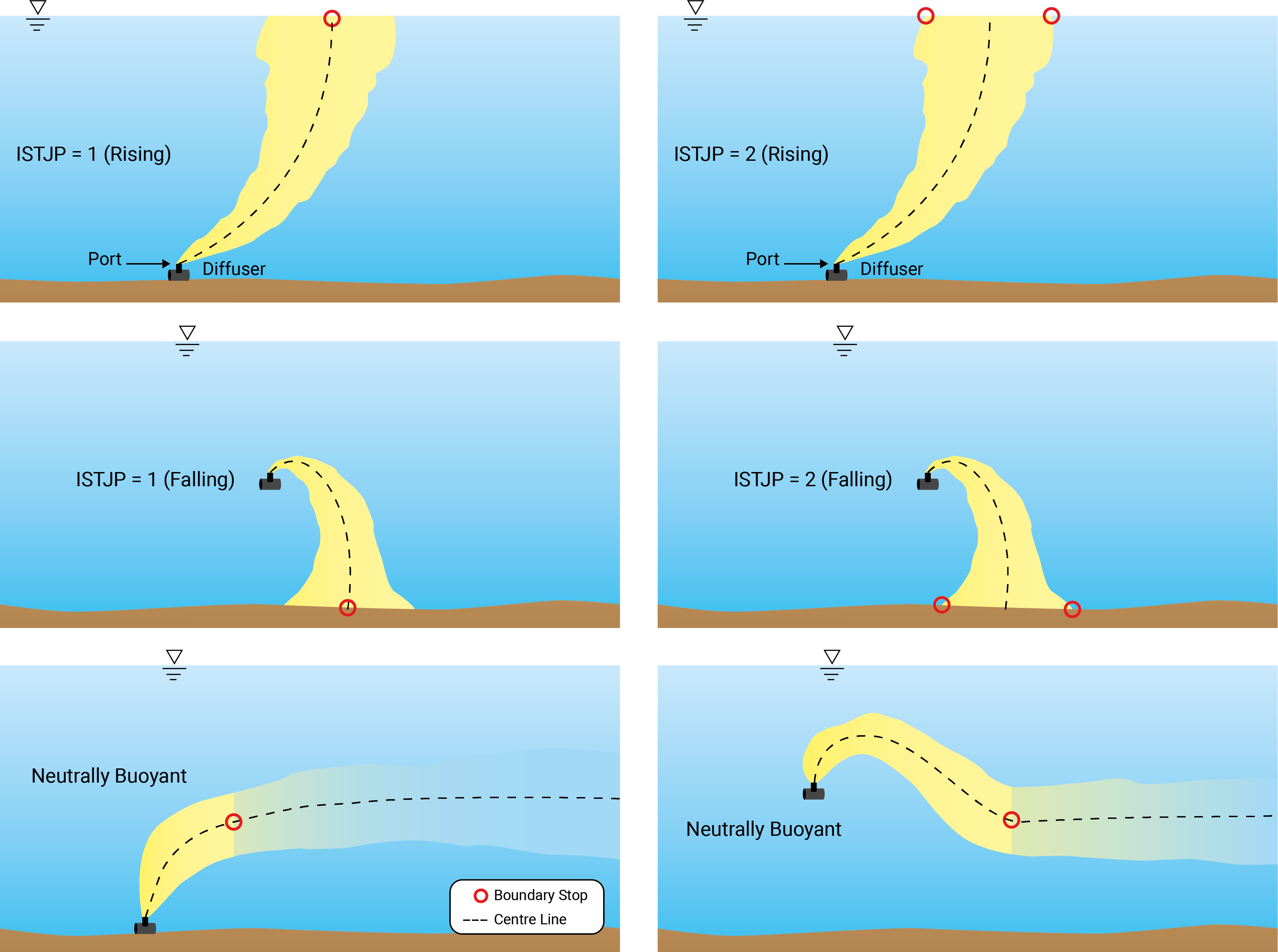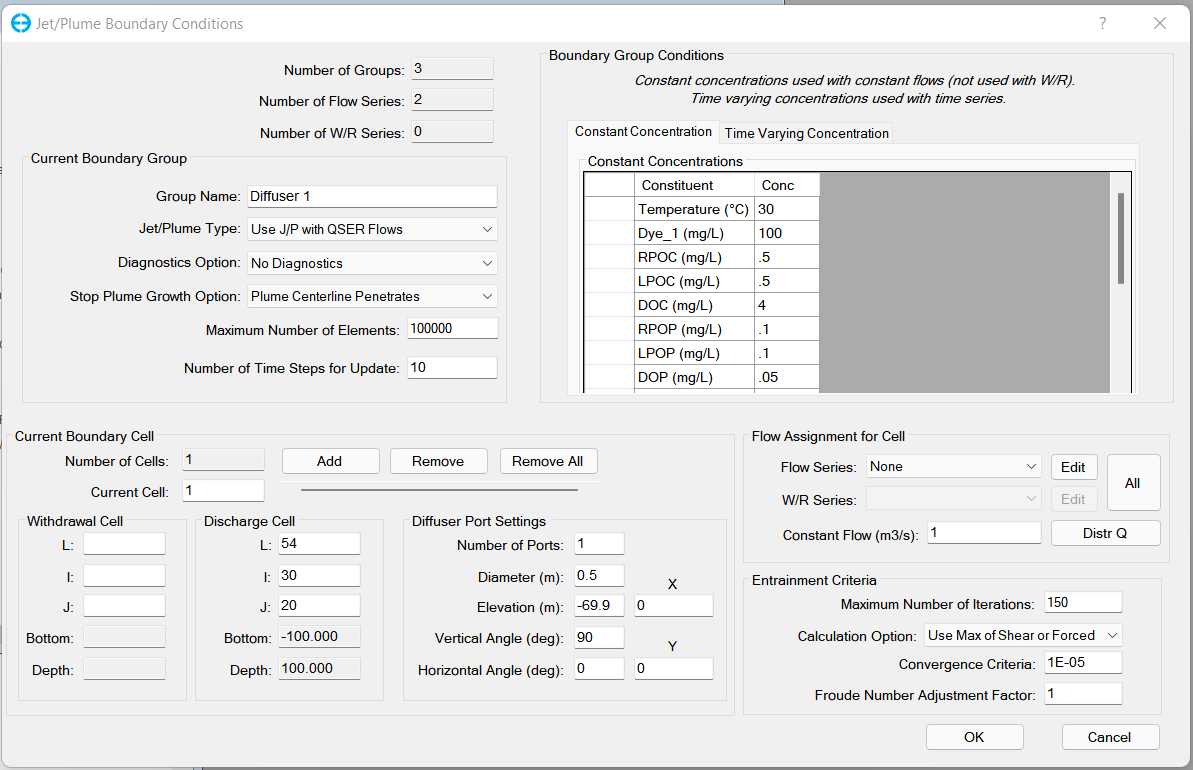The form for the jet and plume boundary condition (Figure 1) features the Current Boundary Cell and Boundary Group Conditions frames similar to the Flow Boundary Conditions form. One difference is that in Current Boundary Cell for Jet/Plume, the user must define an upstream cell and a downstream cell simultaneously. In the Jet/Plume Type drop-down menu, the user specifies the flow data of a jet plume boundary to link to with the time series options. These options include by-passing (ICAL=0), using a flow time series (QSER, ICAL=1), and using a withdrawal return time series (W/R, ICAL=2). The Flow Series and W/R Series in Flow Assignment for Cell is enabled according to the Jet/Plume type selected. From the release of EEMS11.2 WQ constituents may also be added to the plume.
The Diagnostics drop-down menu allows the user to select from the display jet/plume stop conditions and save jet/plume growth details. The Stop Plume Growth Option allows the simulation to stop after a certain number of elements (ISTJP = 0), when the plume centreline penetrates the surface or bottom (ISTJP = 1), or when the plume edge penetrates the surface or bottom (ISJTP = 2), as shown in Figure 1. The neutrally buoyant condition, also shown in Figure 1, applies in all cases.
Figure 1. Stop plume growth options.
In the Diffuser Port Settings frame, the user may specify the settings for each discharge cell, including the number of ports, the elevation, and the diameters of the port outlets, as well as the horizontal (azimuth, measured from true north) and vertical (altitude) angles. It should be noted that the flow in the QSER file is multiplied times the number of ports for the total flow for that BC cell. So, for example, if a user has 10 ports, with each port having a time series of 0.15 cms assigned for the jet, then the total flow is 10 * 0.15 cms = 1.5 cms.
The Maximum Number of Elements option is mainly used for plume computation termination purposes. This means that plume growth will always stop when the Maximum Number of Elements is exceeded, which is before reaching the neutral buoyancy level, or the plume reaches the surface (plume density less than ambient) or the bottom (plume density greater than ambient). It is important not to set this value too small as it will cause the computations to cease before the plume reaches the stop growth option.
The Maximum Number of Iterations is the maximum number of loops to calculate within each step of the element computation. Since there are multiple loops in the jet/plume computation, the actual computation can be time-consuming. Therefore, Number of Time Steps for Update lets users define after how many hydrodynamic time steps EFDC+ should compute the jet/plume result again and update the results. If simulating a uniform flow condition, the number of time steps for each update can be set much greater than in a more complex and changing environment.
In the Calculation Option menu, the user can select the Use Max of Shear or Forced option or Use Sum of Shear & Forced.
An adjustment factor for the Froude Number may also be set.
Figure 2. Jet /Plume Boundary Condition form.

